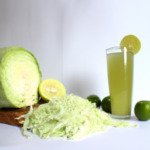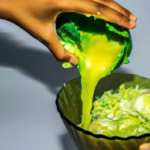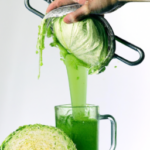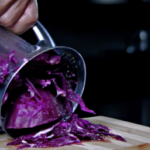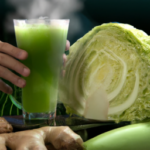Juice Tips and Tricks
How Do You Make Cabbage Juice

As someone who is dedicated to living a healthy lifestyle, I am always looking for new ways to incorporate nutritious foods into my daily diet. I recently discovered cabbage juice, a drink that not only tastes refreshing but also provides many health benefits.
If you’re like me and want to try making your own cabbage juice, you might be wondering where to start. In this article, I’ll guide you through the process of choosing the right cabbage, preparing it for juicing, and adding flavor to your drink. I’ll also explain how you can maximize the nutritional benefits of your cabbage juice and offer some tips for incorporating it into your daily routine.
So, let’s get started!
Key Takeaways
- There are two main methods of extraction for cabbage juice: blending and juicing.
- Proper preparation involves cleaning and chopping the cabbage into smaller pieces.
- Recommended juice recipes include cabbage, carrots, and apples or cabbage, cucumber, and lemon.
- Adding herbs and spices can enhance the flavor of cabbage juice.
Why Cabbage Juice is a Healthy and Refreshing Drink
Cabbage juice isn’t just nutritious, it’s also a thirst-quenching delight. Drinking cabbage juice has numerous benefits for your body. It’s packed with vitamins C and K, as well as antioxidants that help fight inflammation and reduce the risk of chronic diseases.
Additionally, cabbage juice is an excellent source of fiber, which can help regulate digestion and promote a healthy gut microbiome. If you’re looking to incorporate cabbage juice into your daily routine, there are plenty of ways to do so.
You can drink it on its own, mix it with other vegetable juices for a tasty blend, or even add it to smoothies. Cabbage juice is also a great addition to soups and stews, adding both flavor and nutrition. Choosing the right cabbage is important, as different types of cabbage will have slightly different tastes and nutrient profiles.
Choosing the Right Cabbage
When picking out your ingredients for this vibrant drink, don’t forget to select a fresh and crisp head of green or purple leaves. Both types of cabbage are nutritious and offer a range of health benefits, but they differ in taste and appearance.
Green cabbage has a milder flavor and is perfect for those who are new to juicing or want a more subtle taste. On the other hand, purple cabbage has a slightly sweeter taste and a vibrant color that makes it a popular choice for juicing enthusiasts.
If you want to take your cabbage juice to the next level, consider opting for an organic head of cabbage. Although both conventional and organic cabbage offer similar nutritional benefits, organic produce is grown without synthetic pesticides or fertilizers, which can have harmful effects on your health and the environment. Plus, organic cabbage is often fresher and more flavorful than its conventional counterpart.
With the right cabbage in hand, it’s time to move on to preparing it for juicing.
Preparing the Cabbage
Before juicing cabbage, it’s important to prepare it properly. I start by thoroughly cleaning the cabbage, removing any dirt or debris.
Then, I chop it into smaller pieces that will fit easily into my juicer.
Finally, I decide whether to blend the cabbage for a smoother juice or juice it directly for a more concentrated nutrient boost.
Cleaning and Chopping
To get started on your fresh cabbage juice, grab a sharp knife and begin chopping the head into small pieces, allowing for easier blending. When cutting the cabbage, it’s important to use proper cutting techniques to ensure uniform pieces and to prevent injury.
Hold the cabbage firmly with one hand and use the other hand to slice through the head. It’s helpful to cut the cabbage into quarters first before chopping into smaller pieces.
After chopping the cabbage, it’s important to thoroughly clean the pieces before blending or juicing. Rinse the chopped pieces under running water to remove any dirt or debris. If desired, you can also soak the cabbage in a bowl of cold water for a few minutes to loosen any remaining dirt.
Once clean, pat the cabbage pieces dry with a clean towel or paper towel before adding to your juicing equipment.
Now that the cabbage pieces are cleaned and chopped, it’s time to move onto the next step of blending or juicing.
Blending or Juicing
Now it’s time to blend or juice the clean and chopped cabbage pieces. There are two main methods to extract the juice from the cabbage: blending and juicing.
Blending involves using a blender or food processor to puree the cabbage into a smooth liquid, while juicing involves using a specialized juicer to extract the liquid from the cabbage while leaving behind the fibrous pulp.
Both methods have their advantages and disadvantages. Blending retains more of the cabbage’s fiber content, which can be beneficial for digestive health and satiety. On the other hand, juicing removes the fiber and concentrates the nutrients, making it easier for the body to absorb them.
Ultimately, the choice between blending and juicing depends on personal preference and health goals. If you prefer a thicker, more filling juice, blending may be the way to go. If you’re looking for a more concentrated dose of nutrients, juicing may be the better option.
When it comes to adding flavor to your juice, there are a variety of options available. Stay tuned for the next section where we’ll explore some ideas for enhancing the taste of your homemade cabbage juice.
Adding Flavor to Your Juice
Spice up your cabbage juice by adding a pinch of salt and a squeeze of lemon for a tangy kick. Infusing flavors into your juice can make it more enjoyable to drink, and experimenting with herbs and spices can take your juice to the next level. Try adding a few sprigs of fresh mint or a dash of cayenne pepper for some extra zing.
You can also try adding ginger and turmeric for an anti-inflammatory boost. When adding flavor to your cabbage juice, it’s important to keep in mind that some ingredients may overpower the taste of the cabbage. Be sure to add small amounts at a time and taste as you go.
Once you’ve found your perfect flavor combination, sit back and enjoy the delicious and nutritious drink you’ve created. Now, let’s move on to maximizing the nutritional benefits of cabbage juice.
Maximizing Nutritional Benefits
By properly extracting the nutrients from your chosen vegetables, you’ll be able to optimize the benefits of your delicious and healthy juice.
When it comes to making cabbage juice, there are a few juicing techniques that can help you maximize its nutritional content. One of the most effective ways to do this is to use a masticating juicer, which slowly grinds the cabbage and extracts the juice without generating heat. This preserves the enzymes and nutrients that would otherwise be destroyed by the heat generated by a centrifugal juicer.
Another technique that can help you maximize the nutritional benefits of your cabbage juice is to juice it alongside other vegetables. This will not only add flavor, but also increase the overall nutrient content of your juice.
Some great juice recipes to try include a combination of cabbage, carrots, and apples, or cabbage, cucumber, and lemon. By incorporating different vegetables into your juice, you’ll be able to enjoy a variety of nutrients and flavors.
With these tips in mind, you’ll be able to create a nutritious and delicious cabbage juice that is packed with vitamins and minerals. Now, let’s delve into the recommended daily intake of this healthy beverage.
Recommended Daily Intake
To get the most out of your daily nutrient intake, it’s recommended to incorporate a glass of fresh cabbage juice into your diet. Cabbage is an excellent source of vitamins C and K, as well as folate and fiber. Incorporating cabbage juice into your diet can provide numerous health benefits, including improved digestion, strengthened immune system, and lower risk of chronic diseases such as cancer and heart disease.
However, it’s important to note that consuming too much cabbage juice can also have some risks. Cabbage contains compounds called goitrogens, which can interfere with thyroid hormone production and potentially lead to hypothyroidism if consumed in excess. It’s recommended to limit cabbage juice intake to no more than 8 ounces per day and to speak with a healthcare provider if you have a thyroid condition or are taking thyroid medication.
Moving onto the subsequent section about health benefits, incorporating cabbage juice into your diet can provide numerous health benefits, including improved digestion, strengthened immune system, and lower risk of chronic diseases such as cancer and heart disease.
Health Benefits
Moving on to the health benefits of cabbage juice, it’s important to note that it’s a rich source of vitamins and minerals. These include vitamin C, K, and B6, as well as potassium, calcium, and magnesium. These nutrients are essential for maintaining a healthy body and can help prevent a variety of health conditions.
Here are some of the health benefits associated with drinking cabbage juice:
-
Boosts Immunity: Cabbage juice is rich in vitamin C, which is known to boost the immune system and protect the body against infections.
-
Reduces Inflammation: The antioxidants present in cabbage juice can help reduce inflammation in the body, which can help prevent chronic diseases like arthritis and heart disease.
-
Promotes Digestive Health: Cabbage juice is a good source of fiber, which can help promote digestive health and prevent constipation.
-
Supports Weight Loss: Cabbage juice is low in calories and high in fiber, making it a great addition to any weight loss diet.
If you’re wondering how to incorporate cabbage juice into your diet, there are a few simple ways to do so. You can drink it straight up, mix it with other vegetable juices, or add it to smoothies. You can also use it as a base for soups or stews.
However, it’s important to note that cabbage juice should be consumed in moderation, as excessive consumption can lead to digestive issues.
With that in mind, let’s move on to the next section about precautions.
Precautions
As I continue to explore the benefits of cabbage juice, it’s important to note that there are potential side effects and interactions with medications that need to be considered. While cabbage juice is generally safe to consume, excessive intake can cause bloating, gas, and diarrhea.
Additionally, cabbage contains vitamin K, which can interfere with blood thinning medications. It’s important to talk to a healthcare professional before making cabbage juice a regular part of your diet, especially if you’re taking any medications.
Potential Side Effects
Beware of the bloating and belching that may occur with consuming copious amounts of cabbage juice. While cabbage juice is generally safe to consume, some people may experience potential side effects. Here are some things to keep in mind:
-
Nausea: Drinking too much cabbage juice may lead to nausea. It’s best to start with small amounts and gradually increase the intake to avoid this side effect.
-
Diarrhea: Like many other juices, cabbage juice can have a laxative effect on the body. Drinking too much cabbage juice may cause diarrhea. Again, it’s important to start with small amounts and gradually increase the intake to avoid this side effect.
-
Hypothyroidism: Cabbage contains goitrogens, which are compounds that can interfere with the thyroid gland’s ability to produce hormones. People with hypothyroidism should consume cabbage juice in moderation or avoid it altogether.
It’s important to be mindful of these potential side effects when consuming cabbage juice. In the next section, we’ll discuss the interactions that cabbage juice may have with certain medications.
Interactions with Medications
It’s important to note that cabbage juice may interact with certain medications, so it’s wise to consult with a healthcare provider before regularly consuming it.
There are certain drugs that can be affected by the consumption of cabbage juice, particularly those used to treat thyroid disorders, such as hypothyroidism. Cabbage juice contains compounds called goitrogens, which can interfere with the absorption of iodine, a mineral that is essential in maintaining proper thyroid function. As a result, consuming large amounts of cabbage juice while taking thyroid medication may lead to an increased risk of developing hypothyroidism.
Additionally, cabbage juice may also interact with blood-thinning medications, such as warfarin. Cabbage contains vitamin K, which plays a role in blood clotting. As such, consuming large amounts of cabbage juice while taking blood thinners may lead to an increased risk of bleeding.
It’s important to speak with a healthcare provider to determine if cabbage juice is safe to consume while taking these medications, as well as other potential contraindications.
Frequently Asked Questions
Can you store cabbage juice in the refrigerator for later use?
Yes, you can store cabbage juice in the refrigerator for later use. It’s best to consume it within 3-4 days to retain its nutritional value. Drinking cabbage juice regularly can improve digestion, boost immunity, and promote weight loss. Remember to shake well before consuming.
How long does it take to make cabbage juice?
I’m happy to share that it only takes a few minutes to make cabbage juice! The benefits of consuming cabbage juice are numerous, including improved digestion and lowered inflammation. To improve the taste, try adding apple or lemon juice.
Is it better to use a juicer or a blender for making cabbage juice?
When making cabbage juice, using a juicer will result in a smoother texture and higher yield, but may remove some nutrients. A blender will retain more fiber and nutrients, but may have a less pleasant taste and texture.
Can you mix cabbage juice with other fruits or vegetables?
Mixing cabbage juice with other fruits or vegetables can enhance the benefits of drinking it. Try adding apple, carrot, or ginger for added flavor and nutrients. Incorporate cabbage juice into your diet with recipes like coleslaw or stir-fry.
Will drinking cabbage juice help with weight loss?
Drinking cabbage juice may aid weight loss due to its low calorie content and high fiber content. However, it should not be relied upon as a sole weight loss method. Cabbage juice also offers many nutritional benefits, including vitamin C and antioxidants.
Conclusion
In conclusion, making cabbage juice is a simple and healthy way to boost your daily intake of vitamins and minerals. By choosing the right cabbage, preparing it properly, and adding flavorful ingredients, you can create a delicious and refreshing beverage that’s packed with nutrients.
But don’t let the pleasant taste fool you – cabbage juice is a powerful health elixir. It can improve digestion, boost immunity, and even lower the risk of cancer.
So next time you’re looking for a nutritious and tasty drink, reach for a glass of homemade cabbage juice and enjoy the benefits it provides.
Cindy thoroughly researches juicing trends, techniques, and recipes to provide readers with practical advice and inspiration. Her writing style is accessible, engaging, and designed to make complex concepts easy to understand. Cindy’s dedication to promoting the advantages of juicing shines through her work, empowering readers to make positive changes in their lives through the simple act of juicing.
Juice Tips and Tricks
How to Make Aloe Vera Juice Taste Better

Tired of the strong flavor of aloe vera juice? No problem, we’ve got the answer for you.
In this article, we’ll share some tips and tricks to make your aloe vera juice taste better. We have tried and tested various methods to enhance the flavor without compromising the health benefits.
From choosing the right juice to adding natural sweeteners and infusing with fruits and herbs, we’ve got all the information you need to transform your aloe vera juice into a delightful and refreshing beverage.
Let’s dive in!
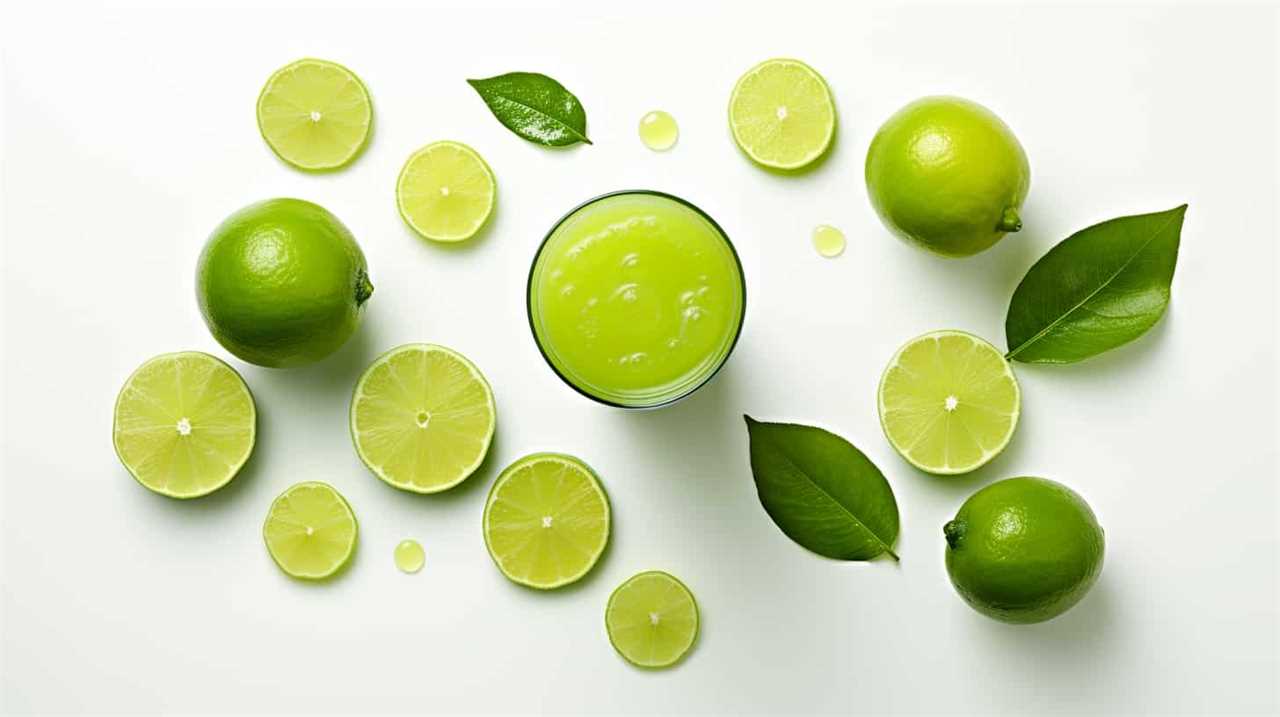
Key Takeaways
- Choose a reputable brand of aloe vera juice that prioritizes quality and uses organic, pure aloe vera.
- Avoid brands that contain added sugars or artificial ingredients.
- Use natural sweeteners like honey, agave syrup, or stevia to enhance the taste of aloe vera juice.
- Experiment with adding fruits, herbs, and other juices to create unique flavor combinations and enhance the health benefits of aloe vera juice.
Choosing the Right Aloe Vera Juice
We can enhance our experience with aloe vera juice by selecting the right brand and type for our preferences. When it comes to finding a reputable brand, it’s important to do some research and read reviews from other consumers. Look for brands that prioritize quality and use organic, pure aloe vera without any added sugars or artificial ingredients. Understanding the health benefits of aloe vera juice is also crucial in making the right choice. Aloe vera is known for its soothing properties, aiding digestion, promoting skin health, and boosting the immune system. By choosing a high-quality brand, we can ensure that we’re getting the maximum benefits from our aloe vera juice.
Now that we know how to choose the right brand, let’s move on to the next step of adding natural sweeteners.
Adding Natural Sweeteners
To enhance the flavor of our aloe vera juice, we can add natural sweeteners such as honey or agave syrup. Using alternative sweeteners not only adds sweetness but also brings unique flavors to the juice. Here are some options to consider:
- Stevia: A natural sweetener derived from the Stevia plant, it’s a zero-calorie alternative to sugar.
- Maple Syrup: This natural sweetener adds a rich and earthy flavor to the aloe vera juice.
- Dates: Pureed dates can be used to sweeten the juice while also providing essential nutrients like fiber.
In addition to using alternative sweeteners, we can enhance the flavor of aloe vera juice by adding spices and extracts. Cinnamon, ginger, or vanilla extract can add warmth and depth to the taste. By experimenting with different combinations of these natural sweeteners, spices, and extracts, we can create a flavor profile that suits our preferences.

Now, let’s move on to the next section and learn how to infuse aloe vera juice with fruits and herbs to further enhance its taste.
Infusing With Fruits and Herbs
As we explore ways to make our aloe vera juice taste better, one option to consider is infusing it with fruits and herbs. Creating unique aloe vera blends by adding fruits and herbs not only enhances the flavor but also adds a touch of freshness and complexity to the juice.
Fruits like strawberries, pineapple, or citrus can add a burst of sweetness, while herbs like mint, basil, or ginger can provide a subtle yet refreshing twist. Exploring the benefits of herbal infusions can also be beneficial for our health. For example, adding a few sprigs of lavender can promote relaxation and reduce stress. Additionally, infusing aloe vera juice with rosemary can aid digestion and boost the immune system.
Blending With Other Juices
Let’s try mixing aloe vera juice with different fruit juices to create delicious and refreshing blends. Blending aloe vera juice with other fruits not only enhances its taste but also adds nutritional benefits to your drink. Here are three fruit juices that you can mix with aloe vera juice:

- Orange juice: Combining aloe vera juice with orange juice not only adds a tangy flavor but also boosts your intake of vitamin C, which is essential for a strong immune system.
- Pineapple juice: Mixing aloe vera juice with pineapple juice creates a tropical blend that isn’t only refreshing but also helps in digestion. Pineapple contains bromelain, an enzyme that aids in breaking down proteins and promoting better digestion.
- Watermelon juice: Blending aloe vera juice with watermelon juice creates a hydrating and refreshing combination. Watermelon is rich in water content and contains electrolytes that can help replenish your body’s fluids.
Experimenting With Flavor Combinations
While we can try various flavor combinations with aloe vera juice, it’s important to find the right balance to enhance its taste. Experimenting with different flavors can’t only make the juice more enjoyable but also enhance its health benefits.
Aloe vera juice is known for its numerous health benefits, such as boosting digestion, promoting hydration, and supporting the immune system. By adding complementary flavors, we can create a refreshing summer drink that not only tastes great but also provides a nutritional boost.
Some popular flavor combinations include mixing aloe vera juice with citrus fruits like lemon or orange, adding a splash of coconut water for a tropical twist, or combining it with cucumber and mint for a refreshing and cooling effect.
Don’t be afraid to get creative and find the flavor combination that suits your taste buds best!

Frequently Asked Questions
Can I Use Store-Bought Aloe Vera Gel Instead of Fresh Aloe Vera for Making Juice?
Yes, you can use store-bought aloe vera gel instead of fresh aloe vera for making juice. However, it’s important to note that fresh aloe vera juice may have more health benefits due to its higher nutrient content.
How Long Can I Store Aloe Vera Juice in the Refrigerator?
Aloe vera juice can be stored in the refrigerator for up to a week. Refrigeration helps maintain the longevity and freshness of the juice, preserving its beneficial properties.
Can Aloe Vera Juice Help With Digestive Issues?
Aloe vera juice can potentially help with digestive issues when taken in appropriate dosages. However, it is important to note that there may be potential side effects. It is always best to consult with a healthcare professional before starting any new supplement regimen.
Can I Use Artificial Sweeteners Instead of Natural Sweeteners in My Aloe Vera Juice?
Using artificial sweeteners in aloe vera juice may affect its taste and potential health benefits. However, natural sweeteners like honey or stevia can enhance the flavor without compromising its nutritional value.

Is It Safe to Drink Aloe Vera Juice Every Day?
Drinking aloe vera juice daily can have numerous benefits, such as improving digestion and boosting the immune system. However, consuming it regularly may also lead to potential side effects like diarrhea or stomach cramps.
Conclusion
In conclusion, making aloe vera juice taste better is easy and enjoyable.
By choosing the right aloe vera juice and adding natural sweeteners, infusing with fruits and herbs, blending with other juices, and experimenting with flavor combinations, you can create a delightful and refreshing drink.
So go ahead and unleash your creativity in the kitchen, and transform your aloe vera juice into a sensational elixir that will transport your taste buds to paradise.

Susannah expertise lies in researching and compiling evidence-based content on juicing, nutrition, and overall health. She is committed to ensuring that The Juicery World offers accurate, up-to-date, and trustworthy information to empower readers to take control of their health. Susannah’s goal is to inspire individuals to embrace juicing as a way to nourish their bodies and live their best lives.
Juice Tips and Tricks
How to Make a Glass of Lemonade With Bottled Lemon Juice

Are you craving a cool glass of lemonade to quench your thirst? Look no further! Try out our perfect recipe using bottled lemon juice that will surely please your taste buds.
In this article, we’ll guide you through the process of creating a tangy and sweet concoction that will leave you feeling refreshed and satisfied.
So grab your ingredients and let’s get started on this delightful journey of serving ourselves and others a glass of pure lemony goodness.
Key Takeaways
- Consider the storage of the bottled lemon juice (dark glass or plastic bottles, protect from light exposure, check expiration date)
- Choose a suitable pitcher and fresh lemons for enhanced flavor
- Store the lemonade concentrate in the refrigerator to maintain freshness
- Adjust the sweetness and tartness to taste with sugar or more lemon juice, and experiment with different sweeteners or additional flavors.
Choosing the Right Bottled Lemon Juice
What are the key factors we should consider when selecting the right bottled lemon juice for our lemonade?

One important factor is how the lemon juice is stored. Look for bottles that are made of dark glass or plastic, as they help protect the juice from light exposure, which can degrade its quality. It’s also important to check the expiration date to ensure freshness.
Another benefit of using bottled lemon juice is convenience. It saves time and effort compared to squeezing fresh lemons. Additionally, bottled lemon juice provides consistent flavor, as the acidity levels are standardized.
When selecting a brand, consider reading reviews and checking for certifications, such as organic or non-GMO.
Gathering the Necessary Ingredients and Tools
How can we gather all the necessary ingredients and tools to make a glass of lemonade with bottled lemon juice?
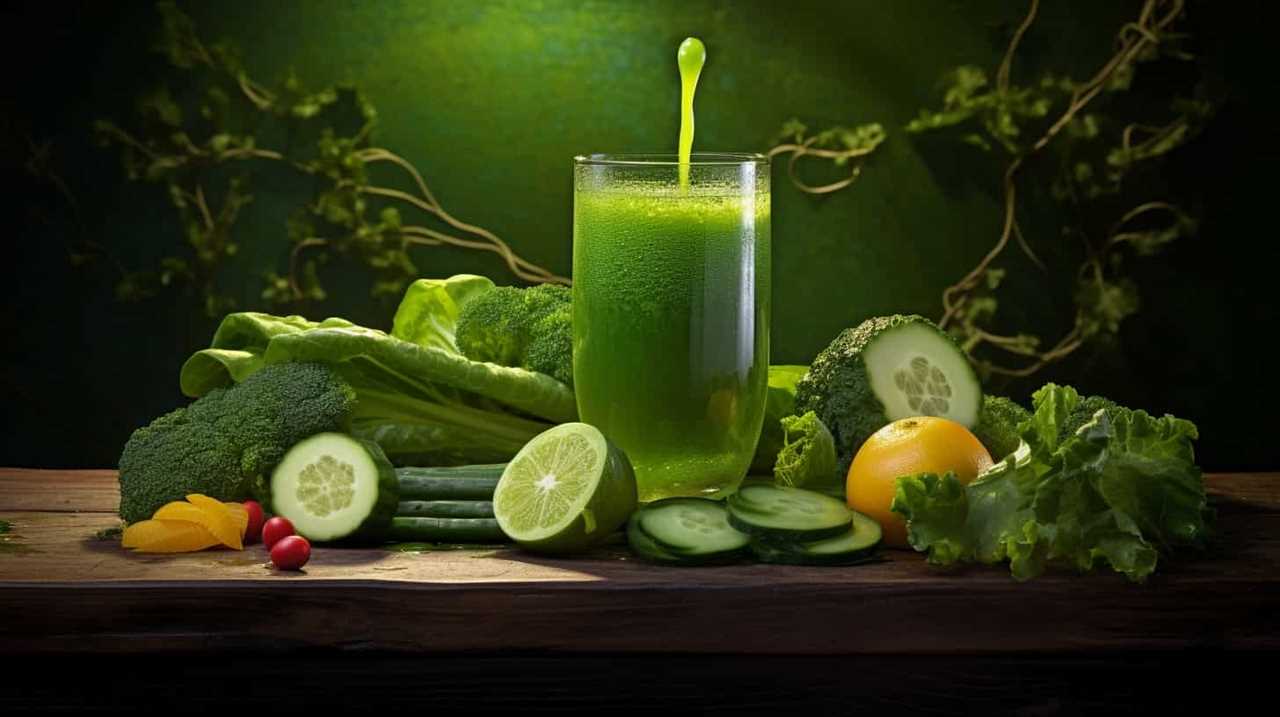
It’s important to start with the right pitcher. Look for a pitcher that’s made of glass or BPA-free plastic, as these materials won’t affect the taste of the lemonade. The pitcher should also have a lid or cover to keep the lemonade fresh and prevent spills.
Now, let’s talk about the lemons. While bottled lemon juice is convenient, using fresh lemons instead can elevate the flavor of your lemonade. Choose lemons that are firm and have a bright yellow color. Give them a gentle squeeze to ensure they’re juicy. To extract the juice, you’ll need a citrus juicer or a reamer. These tools make it easy to get every last drop of juice from the lemons.
Mixing the Lemonade Concentrate
To start mixing the lemonade concentrate, we’ll slowly pour the bottled lemon juice into the pitcher. It’s important to choose the right container for the lemonade concentrate. A pitcher with a lid or a tightly sealed container will help maintain the freshness and prevent any spills or leaks. Once the lemon juice is in the pitcher, we can move on to the next step of adding water and sweetener.
To ensure the lemonade concentrate stays fresh, it’s essential to store it properly. Keep the pitcher in the refrigerator to maintain its cool temperature and prevent any bacteria growth. If you have any leftover concentrate, transfer it to a smaller container with an airtight lid before refrigerating. This will help retain its flavor and prevent any contamination.

Now that we’ve mixed the lemonade concentrate, it’s time to adjust the sweetness and tartness to taste.
Adjusting the Sweetness and Tartness to Taste
We can adjust the sweetness and tartness of the lemonade to taste by adding more sugar or lemon juice, respectively. If you prefer a sweeter lemonade, simply add more sugar and stir until it dissolves completely. You can experiment with different sweeteners such as honey or agave syrup to find the perfect balance of sweetness.
On the other hand, if you want a tangier lemonade, add more lemon juice gradually, tasting as you go until it reaches your desired level of tartness.
Additionally, you can get creative with your lemonade by adding flavors like fresh mint leaves or a hint of lavender. These additions can elevate the flavor profile and create a more refreshing and unique experience.

Now that we’ve adjusted the sweetness and tartness of our lemonade, let’s move on to serving and enjoying your refreshing glass of lemonade.
Serving and Enjoying Your Refreshing Glass of Lemonade
Now let’s sit back, relax, and savor our refreshing glass of lemonade.
When it comes to serving and enjoying this delightful drink, there are a few techniques and garnishing options to consider.
Firstly, serving your lemonade chilled is essential for maximum enjoyment. Ensure that you have chilled glasses or add ice cubes to the glasses before pouring the lemonade.

To add a touch of elegance, you can garnish your lemonade with a slice of lemon on the rim of the glass. For an extra burst of flavor, you could also add a sprig of fresh mint or a few berries.
Remember to gently stir the lemonade before serving to evenly distribute the flavors.
Now, take a sip, feel the refreshing tang of lemon, and let the sweet and tart flavors dance on your taste buds.
Cheers!
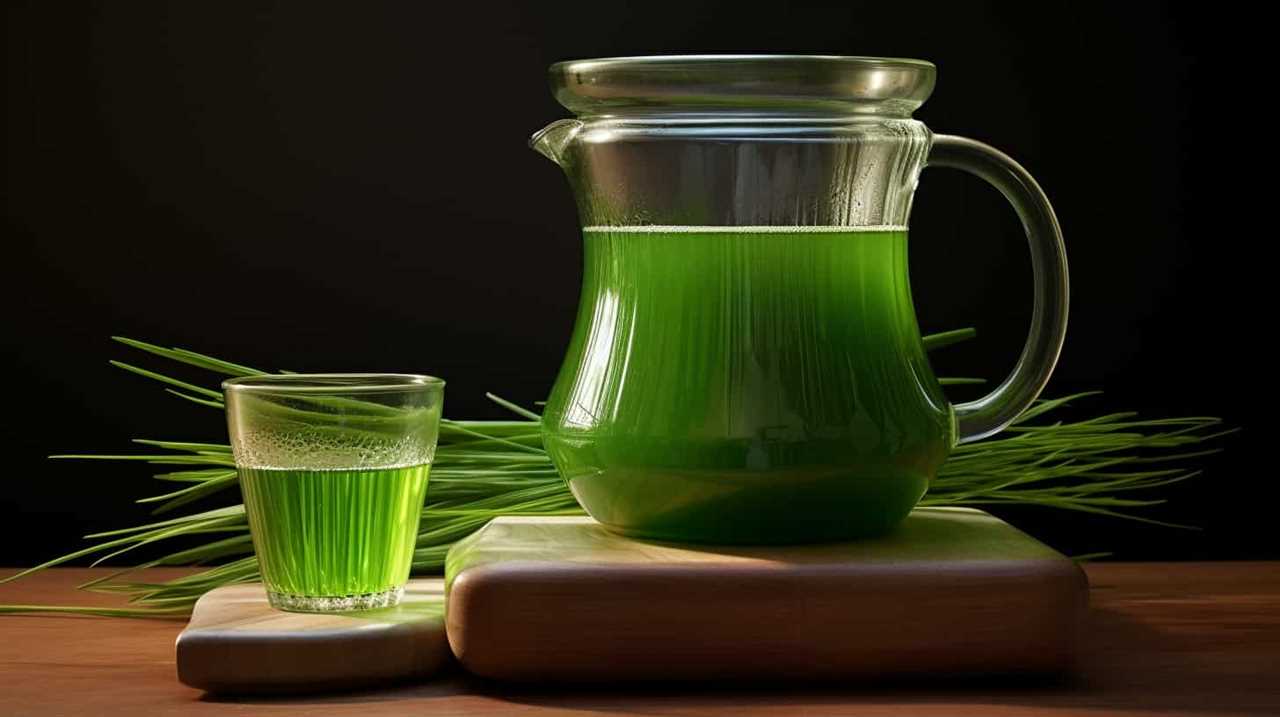
Frequently Asked Questions
Can I Use Fresh Lemons Instead of Bottled Lemon Juice?
Fresh lemons offer numerous benefits over bottled lemon juice. The taste of fresh lemons is unparalleled, providing a vibrant and tangy flavor. Incorporating fresh lemons into your lemonade will elevate its taste and give it a refreshing and authentic twist.
Can I Substitute Sugar With a Different Sweetener?
Substituting sweeteners in lemonade can enhance the flavor and offer health benefits. We’re knowledgeable about alternative sweeteners and can provide precise, detailed instructions on using them in place of sugar.
How Long Does the Lemonade Concentrate Need to Chill in the Refrigerator?
The chilling time for the lemonade concentrate in the refrigerator is typically around 1-2 hours. Using bottled lemon juice offers the benefit of convenience and consistent flavor for a refreshing glass of lemonade.
Can I Add Other Fruits or Flavors to the Lemonade?
Sure, we can definitely add different fruits or flavors to our lemonade. It’s a great way to experiment with unique flavors and create refreshing, personalized drinks. The possibilities are endless!

How Long Does the Lemonade Stay Fresh in the Refrigerator?
Lemonade made with bottled lemon juice can stay fresh in the refrigerator for about 5-7 days. To maximize shelf life, store it in an airtight container and keep it chilled.
Conclusion
And so, with a few simple steps and the right ingredients, a glass of refreshing lemonade is born.
Like a symphony of flavors dancing on your taste buds, this tangy elixir quenches thirst and brings joy on a hot summer day.
Just a sip transports you to a world of citrusy delight, where the sweetness and tartness blend harmoniously.

So go ahead, indulge in the art of lemonade-making and savor every drop of this sun-kissed nectar.
Cheers to the perfect glass of lemonade!
Susannah expertise lies in researching and compiling evidence-based content on juicing, nutrition, and overall health. She is committed to ensuring that The Juicery World offers accurate, up-to-date, and trustworthy information to empower readers to take control of their health. Susannah’s goal is to inspire individuals to embrace juicing as a way to nourish their bodies and live their best lives.
Juice Tips and Tricks
How to Know if Orange Juice Is Bad

We’ve all been in that situation before – reaching for a glass of orange juice and hesitating, unsure if it’s still okay to drink. Fear not! This article will give you the knowledge you need to determine for sure if your orange juice is still fresh or if it’s gone bad.
With a blend of scientific precision and practical tips, we’ll explore color changes, strange smells, off taste, texture changes, and mold or growth that may indicate spoilage.
Let’s dive in and serve ourselves a refreshing glass of certainty!
Key Takeaways
- Color changes in orange juice can indicate a loss of freshness and shelf life extension, but it doesn’t necessarily mean the juice is bad.
- Unusual or off-putting odors in orange juice, such as sour or fermented scents, can be a sign of poor quality.
- An off taste in orange juice, such as sour, bitter, or fermented flavors, suggests that the juice is spoiled.
- Texture changes in orange juice, such as pulp separation or a thicker consistency, can occur as the juice ages, so it’s important to consume it before the expiration date.
Color Changes in Orange Juice
We should be aware that color changes can indicate whether orange juice is bad.

When it comes to orange juice, color is a crucial factor to consider. As oranges are exposed to air, an oxidation process occurs, which leads to changes in color. Fresh orange juice has a vibrant orange hue, indicating its freshness and high nutritional value.
However, as time passes, the juice may undergo a color change, turning dull or brownish. This change in color is a result of the oxidation process, which affects the flavor and quality of the juice. It’s important to note that while a change in color doesn’t necessarily mean the juice is bad, it does indicate that the juice is losing its freshness and shelf life extension.
Therefore, it’s advisable to consume orange juice when it’s at its freshest, as indicated by its vibrant orange color.
Strange Smells in Orange Juice
When it comes to evaluating orange juice, we should be cautious of any strange smells or odors. A fresh, pleasant smell is indicative of good quality orange juice. However, if you notice any unusual or off-putting odors, it may be a sign that the juice has gone bad. These smells can range from a sour or fermented scent to a rancid or moldy aroma.

It’s important to note that while some natural variations in scent can occur due to the specific variety of oranges used, any strong or unpleasant smells should raise concerns. If you have citrus fruit allergies, it’s especially important to pay attention to the smell of orange juice, as it could indicate the presence of spoilage or contamination.
Ensuring the quality of orange juice is essential as it’s a popular beverage known for its health benefits, including being rich in vitamin C and antioxidants.
Off Taste of Orange Juice
Our taste buds can detect even the slightest hint of an off taste in orange juice, which can indicate that it has gone bad. The taste of orange juice should be fresh, tangy, and slightly sweet. If it tastes sour, bitter, or fermented, it’s likely spoiled.
One common cause of an off taste in orange juice is the use of overripe oranges. When oranges become overripe, their flavor profile changes, resulting in a less pleasant taste. Another factor to consider is the expiration date. Orange juice that has passed its expiration date is more likely to develop an off taste. It’s important to check the expiration date before consuming orange juice to ensure its freshness and quality.
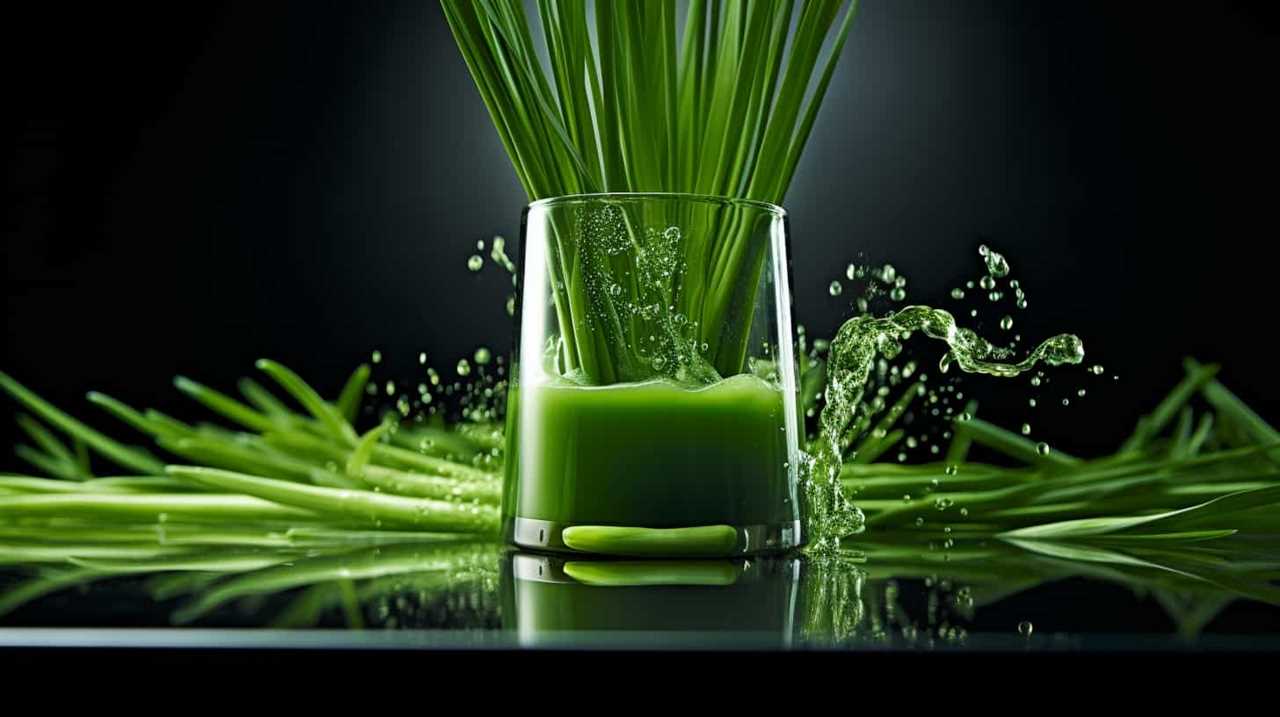
Now, let’s move on to discuss the texture changes in orange juice.
Texture Changes in Orange Juice
As we explore the texture changes in orange juice, it’s important to note that certain factors can cause it to become thicker or develop sediment. One common texture change in orange juice is pulp separation, where the pulp separates from the liquid and settles at the bottom. This can occur naturally over time, as the pulp particles become denser and sink.
Another factor that can affect the texture of orange juice is the expiration date. As orange juice ages, it may start to develop a thicker consistency and even form sediment. This is a result of the natural breakdown of the juice’s components. Therefore, it’s crucial to check the expiration date on orange juice and consume it before it reaches its expiration date to avoid any undesirable texture changes.
Mold or Growth in Orange Juice
We need to be aware of the possibility of mold or other growth occurring in orange juice. Mold can develop in orange juice if it isn’t stored properly or if it has passed its expiration date.
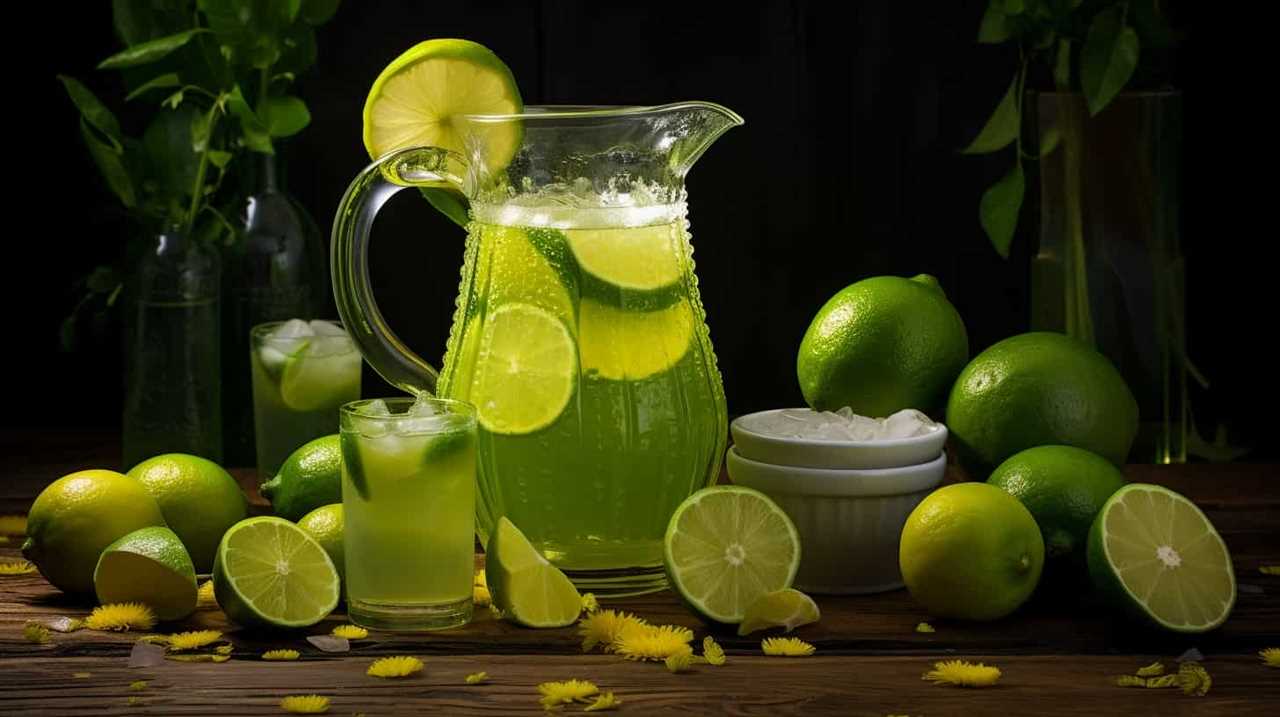
To prevent mold growth, it’s important to follow these steps:
- Store orange juice in the refrigerator at a temperature below 40°F (4°C).
- Check the expiration date on the bottle before consuming. Discard any orange juice that has expired.
- Keep the container tightly sealed to prevent air and moisture from entering, as these can promote mold growth.
Regularly inspecting orange juice for any signs of mold or unusual growth is essential. If you notice any discoloration, a strange odor, or visible mold, it’s best to discard the juice to avoid any potential health risks.
Frequently Asked Questions
Can Orange Juice Go Bad if It’s Stored in the Freezer for Too Long?
Frozen orange juice can potentially lose its nutrients and change its taste if stored in the freezer for too long. It is important to check for signs of spoilage before consuming it.
How Long Can Orange Juice Stay Fresh in the Refrigerator Once It’s Opened?
Once opened, orange juice can stay fresh in the refrigerator for about 7-10 days. To maintain its freshness, store it properly by keeping it tightly sealed and at a consistently cold temperature.
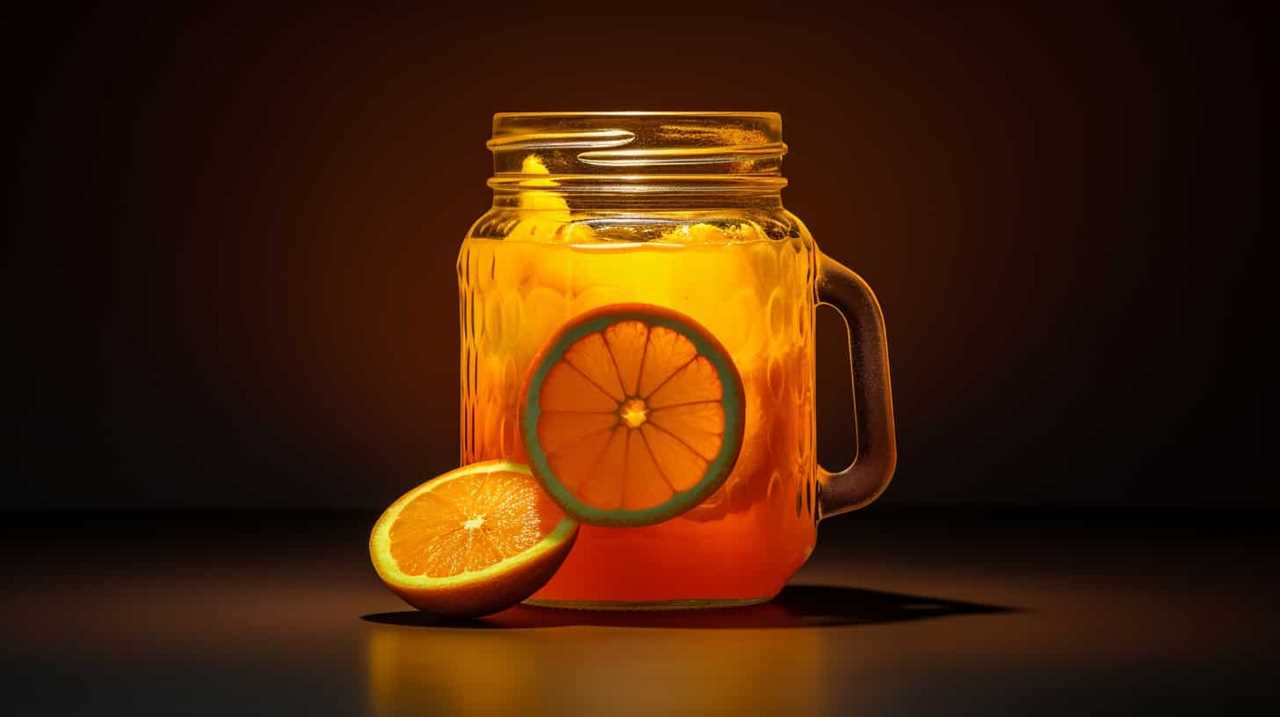
Is It Safe to Consume Orange Juice That Has Been Left Out at Room Temperature Overnight?
Left out orange juice may not be safe to drink as it can harbor harmful bacteria. Signs of spoiled orange juice include a sour smell, mold growth, and a change in color or taste.
Can Orange Juice Develop Harmful Bacteria if It’s Past Its Expiration Date but Still Looks and Smells Fine?
Orange juice can cause food poisoning if it develops harmful bacteria, even if it looks and smells fine. Signs of spoiled orange juice include a sour smell, mold growth, and a change in color or taste.
Does the Nutritional Value of Orange Juice Decrease as It Starts to Go Bad?
As orange juice goes bad, its nutritional value decreases. The longer it sits on the shelf, the more nutrients it loses. Signs of spoilage include a sour smell, off taste, and mold growth.
Conclusion
In conclusion, determining if orange juice is bad requires careful observation of color changes, strange smells, off taste, and texture changes. Just like a detective investigating a case, we must rely on our senses to detect any signs of spoilage.
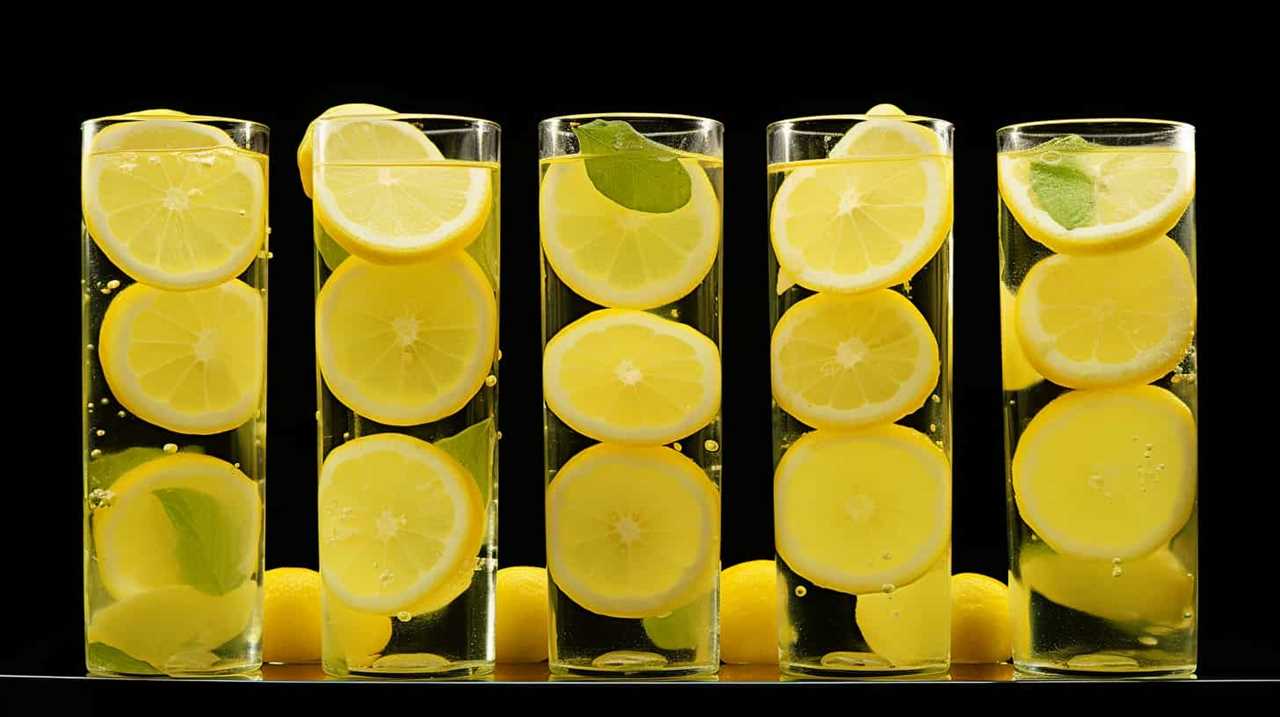
If we detect mold or growth in the orange juice, it’s a clear indication that it’s no longer safe to consume. By remaining vigilant and attuned to these indicators, we can ensure that our orange juice is always fresh and enjoyable.
Susannah expertise lies in researching and compiling evidence-based content on juicing, nutrition, and overall health. She is committed to ensuring that The Juicery World offers accurate, up-to-date, and trustworthy information to empower readers to take control of their health. Susannah’s goal is to inspire individuals to embrace juicing as a way to nourish their bodies and live their best lives.
-

 Juice Tips and Tricks3 months ago
Juice Tips and Tricks3 months agoHow To Make Homemade Pickle Juice
-

 Juice Tips and Tricks3 months ago
Juice Tips and Tricks3 months agoHow Much Lemon Juice Is Equal To Half A Lemon
-

 Juice Tips and Tricks3 months ago
Juice Tips and Tricks3 months agoHow Much Lemon Juice Concentrate Equals One Lemon
-

 Juice Tips and Tricks2 months ago
Juice Tips and Tricks2 months agoHow Long Can You Drink Orange Juice After The Expiration Date
-

 Fruit Juice Varieties2 months ago
Fruit Juice Varieties2 months agoTop 11 Most Loved Fruit Juice Varieties
-

 Juice Tips and Tricks3 months ago
Juice Tips and Tricks3 months agoHow Much Lemon Juice Is Equivalent To 1 Lemon
-

 Juice Tips and Tricks3 months ago
Juice Tips and Tricks3 months agoHow Much Lemon Juice Is Equivalent To One Lemon
-

 Organic and Natural Juices2 months ago
Organic and Natural Juices2 months ago8 Best Organic Brands for Fruit Juice




